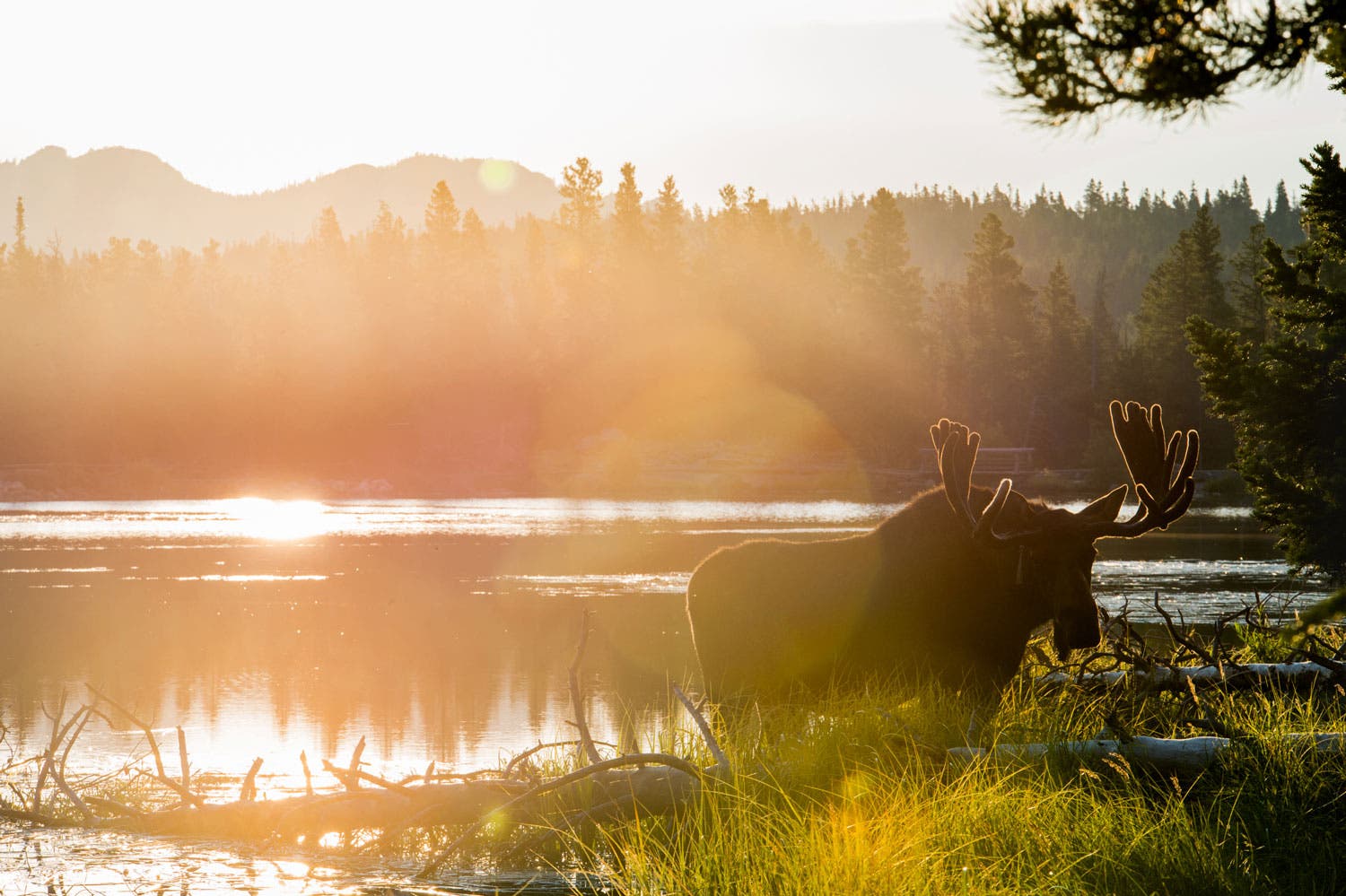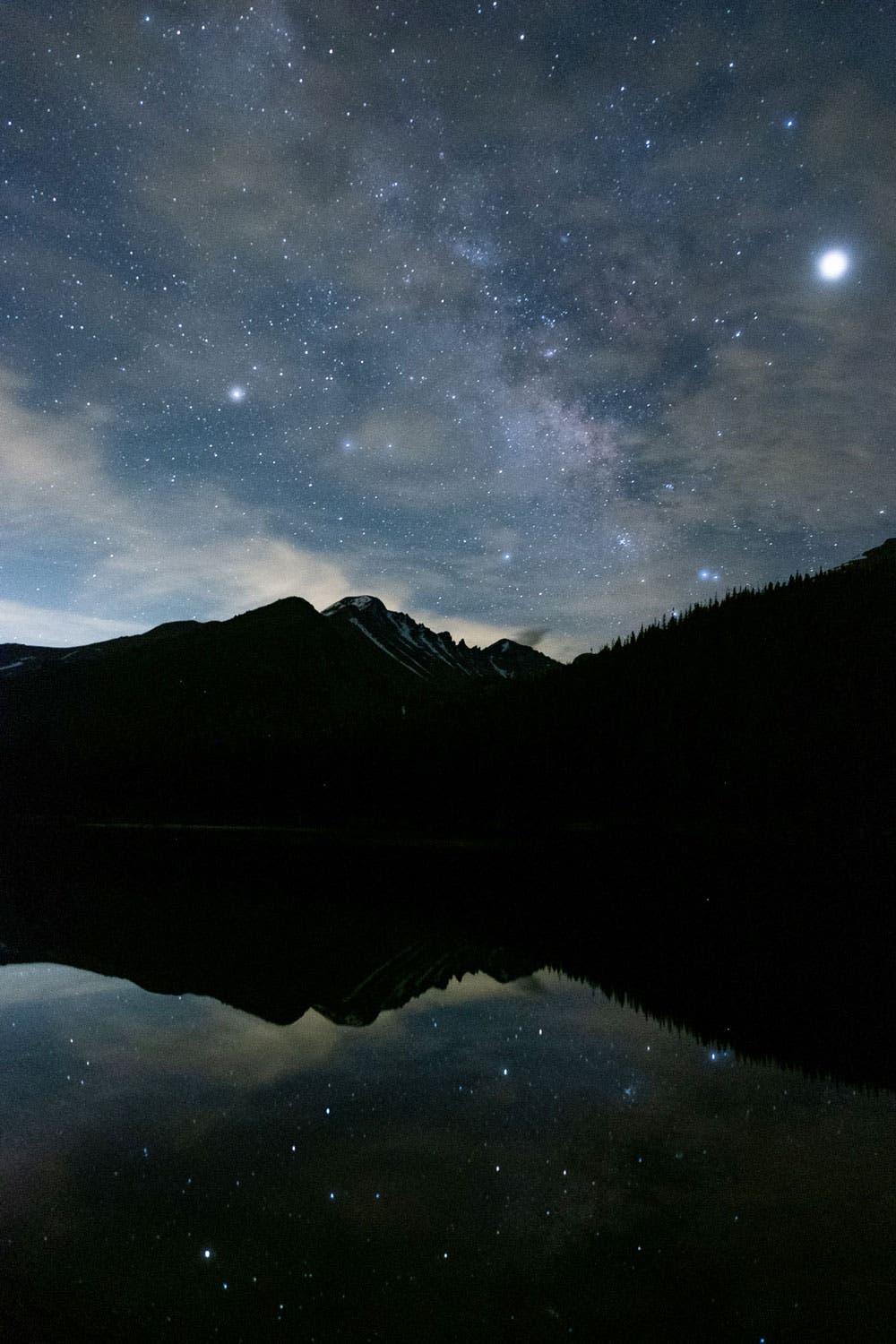How to Get the Best Photos of Rocky Mountain National Park

Sunset at Bear Lake, Rocky Mountain National Park (Photo: courtesy Ken Hubbard)
With awe-inspiring peaks reflected in alpine lakes, tumbling waterfalls and wildlife galore, Rocky Mountain is a photographer’s paradise. The only problem? It’s not a secret. As one of the consistently most visited national parks in the country, avoiding the crowds can be tricky, even with timed-entry reservation requirements in the summer months. The solution is easier than you think, especially for photographers. Explore the park’s most stunning vistas when everyone else is still in bed. We’ve compiled our favorite locations and tips from Tamron on how to get the best photos of this park at sunrise, sunset and deep into the night.
Sunrise at Sprague Lake

This pretty lake is a great place to capture the sunrise since it’s easy to access in the dark. Located off Bear Lake Road, park at the Sprague Lake Parking Lot and take the short boardwalk trail to the path that loops around the lake. You’ll be facing east as soon as you get to the lake’s shore, so choose a spot to set up to wait. After you capture the moment the sun peeks over the horizon, be sure to check out other vantage points along the flat, 1-mile path around the lake to get different perspectives in the early morning light.
Timed-entry reservations are expected to be required on Bear Lake Road starting at 5 a.m., summer 2023. Plan accordingly and arrive 45 minutes before sunrise to give yourself time to set up and capture all the stages of dawn before the sun finally appears. Be sure to bring a headlamp.
Tamron Tips: Clean the front element of your lens when shooting into the rising sun. If there’s dirt or dust on your front element, you might end up with lens flares in your image. Sunrise is usually a high contrast situation, so be sure to expose for the highlights to maintain detail. To create a starburst effect with the rising sun, stop down your aperture to F/16 or F/22 and wait until the sun just crests the horizon. A wide-angle zoom lens like the Tamron 17-28mm F/2.8 Di III RXD or the 28-200mm F/2.8-5.6 Di III RXD is a great choice for both sunrise and sunset.
Sunset at Bear Lake

While the Bear Lake Parking Lot fills up early in the mornings thanks to the many hiking trails that can be accessed from the lot, crowds thin later in the day so sunset is the perfect time to snag a parking space and explore the 1-mile loop around the lake. There are plenty of spots to stray from the trail and get nice views of the lake and surrounding peaks along the loop. It’s a good idea to arrive at least an hour before sunset to scout the trail and find your perfect angle. Look for interesting foreground elements like plants and rocks to make your shot unique.
Be sure to stick around after the sun sets and the colors begin to fade for blue hour. This time of day is the hour just before sunrise or just after sunset when a beautiful blue tint envelopes the landscape. It’s a great time to take photos.
Tamron Tips: When shooting sunset, set your aperture to F/16 or F/22 to maximize your depth of field. If you’re using a tripod, use the lowest ISO to maximize quality. If you’re hand-holding, set your ISO to the lowest value that allows a fast enough shutter speed to get a clear image.
Related: 6 Awe-Inspiring Spots to Watch the Sunset in Rocky Mountain National Park
Night Skies at Bear Lake

As the sunset comes and goes, blue hour fades and the stars begin to appear, stick around at Bear Lake to capture the Milky Way. Choose a clear night near a new moon for your best chance of capturing the opaque band of stars overhead. You can use an app like PhotoPills to see where and when the Milky Way will rise to help you compose your shot with the mountains in the background. If the lake is still, experiment with capturing the stars reflecting on the water.
If you’re feeling adventurous, Bear Lake Trailhead offers several other great opportunities for night sky photography over several lakes and the iconic Longs Peak with some hiking. Always bring a headlamp, a friend and scout your route during the day if you plan to hike at night.
Tamron Tips: A fast aperture, wide angle lens like a Tamron 17-28mm F/2.8 for full-frame or 11-20mm F/2.8 for crop-sensor is best for night photography. Settings will vary based on conditions, but you’ll likely want to shoot at F/2.8 at an ISO between 1600-6400 and a shutter speed between 10 and 30 seconds. Be sure to have a stable tripod and shutter release or remote timer so you don’t shake your camera while taking a long exposure, and turn off your lens’ image stabilization.
You’ll likely need to manually focus as your auto-focus won’t be effective in the dark. Use the magnifier on your camera’s LCD screen to enlarge a bright star or planet, then move your focus ring back and forth until the point of light is sharp. Zoom in on your first few images to make sure the stars are sharp. You can use a piece of tape to secure the focus ring, so you don’t accidentally bump it out of focus.
These tips were sponsored by Tamron. Learn more and find your perfect camera lens at tamron-americas.com.



